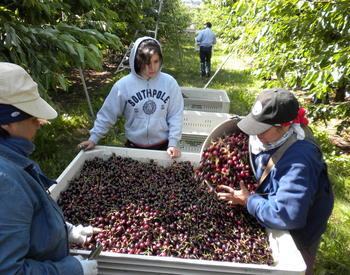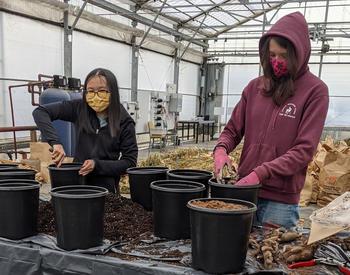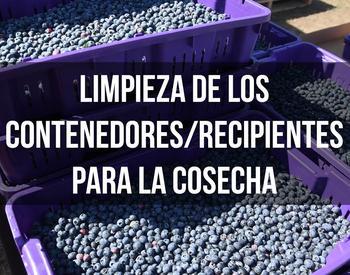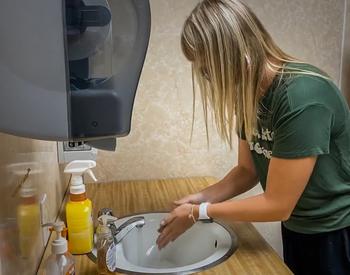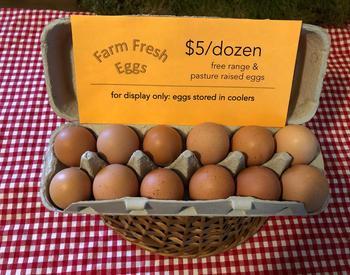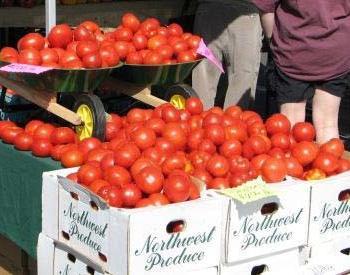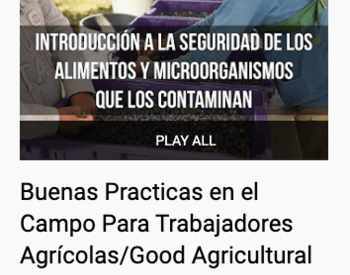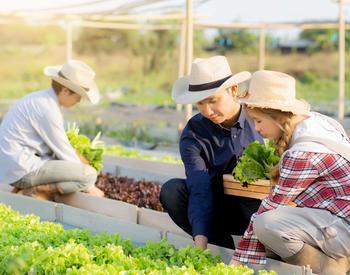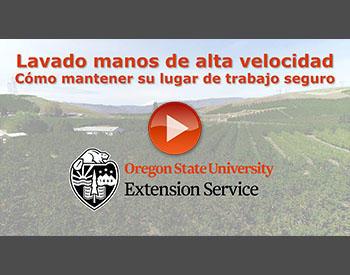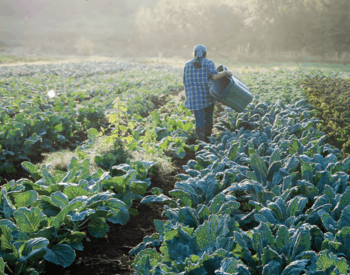Transcript
Good Agricultural Practices for Food Safety Training. Video 5 of 5: Cleaning and sanitation at the packing house. After the harvest is done, you are still responsible to keep the fruits clean and safe for people to eat. So, the packing house also must be clean and sanitary. Every surface that the fruits touch is very important to keep clean, including harvest bins, belts, tables, and racks. If any of these surfaces are contaminated with harmful microbes, also called pathogens, all of the fruits they touch are at risk for causing illness. One way to reduce risk is to clean and sanitize surfaces before you begin work.
Remember, you cannot sanitize a surface if it is dry. Always clean first. Also, look for cracked hoses, standing water, dirty belts, and condensation or water on the walls. Tell your supervisor if you see anything that needs to be cleaned or repaired. These unique packing house conditions can favor the development of some pathogens, specifically Listeria. Keep the floors clean and free from fruits and standing water. Birds and rodents that build nests in the packing house can also be a problem. It is a good practice to establish traps both indoors and outdoors to monitor for the presence of such pests. If you see any pests anywhere in the facility, report this to your supervisor right away. If your packing house has doors and windows, keep them closed. This makes it harder for animals to enter. Another good practice to reduce the risk of food contamination is to place culled fruits in designated containers.
Do not pile them on the working or sorting tables. Remember that any fruit that falls to the floor in the packing house needs to go in the cull pile. Empty the cull pile container often so that it does not become too full to manage. There are other risks of contamination in packing houses such as chemical and physical risks. Keep any chemical in their designated space while not in use; this includes the chemicals you use for cleaning and sanitizing. Physical risks include the presence of bits of wood, metal, and glass that can end up mixed with the fruits. Please tell your supervisor right away if you see any of these elements when sorting the fruit. A final good practice is to keep packing materials and fruits covered to keep unwanted objects out.
Remember the importance of worker hygiene. Wear clean outer garments if you work only in the packing house. If you are coming in from the field, change into clean clothes or put on a fresh apron. Wash hands for 20 seconds with soap and clean water before you start work, after you leave and return to your workstation, and after you use the restroom. Prior to using any transport vehicles to move the harvest, it is a good practice to inspect them to make sure the area is clean before placing containers. Make sure there is no debris or odd odors. If the vehicle belongs to the farm, you should clean and sanitize the area where you will be placing the containers. It is a good idea to also place a clean liner as a barrier between the containers and the vehicle floor. If the vehicle doesn’t belong to the farm, request records to ensure the vehicles have been cleaned and sanitized. Finally, packing houses that send containers back to the field must ensure the containers are properly cleaned and sanitized. These videos are only intended to promote good hygiene practices on a farm to reduce the risk of contamination of fresh agricultural products.
La seguridad de los productos agrícolas frescos continúa en la empacadora, ¡y aquí también se encuentran riesgos! Este video muestra las prácticas de la empacadora que minimizarán el riesgo de contaminar los productos frescos. Aquí también se presentan sugerencias de higiene personal para los trabajadores de las empacadoras.
Good agricultural practices for food safety.
